|
THE STORY
| Alexander III
|

Alexander III
©Hulton Getty
|
In the late 13th century, Scotland was a relatively peaceful and settled medieval country. The King, Alexander III, ruled over a nation free of the normal troubles of the time such as an unrested nobility, foreign encroachments (the Treaty of Norway had brought peace with Scotland's Scandinavian neighbour following Alexander's victory at Largs in 1263) and more importantly, relations with the southern neighbour England were steady. While Scotland was an independent nation, it had close ties with England: nobles held lands in both countries and Alexander's first wife Margaret was Edward I's sister. There was not the huge difference between the relative sizes of the countries as there is now. Then, the population of Scotland was around 500,000, a quarter of England's, as opposed to nowadays, when England's population is nearer to nine times larger. |
Death of Alexander III
In March 1286, all this changed. In the kind of senseless death that would be followed down through the centuries by other Scottish monarchs, Alexander III met his end attempting a reckless, late night journey to be with his young wife. He had spent the evening wining and dining at Edinburgh Castle and set off during a stormy night to be with her in Fife. Ignoring warnings not to make the perilous journey on such a stormy night, he set off regardless. He made it from Dalmeny across the turbulent Forth to Fife and then set off up the coast to Kinghorn. He was not to make it. His horse and he fell from the cliffs, where his body was found the next day. His death was to plunge Scotland into decades of violence and the War of Independence.
|
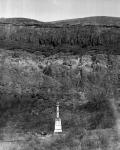
Memorial to Alexander III at Kinghorn, Fife © The Scotsman Publications Ltd
|
Guardians of the Realm
|
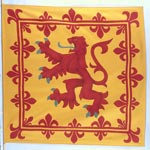
Heraldic banner made for the Wallace exhibition © Dr Patrick Barden
|
In medieval times, a nation's destiny and welfare could rest on the ability of a monarch to produce a strong, preferably male, heir. In 1286, there was a designated heir - Alexander's grand-daughter Margaret, the Maid of Norway - who he had stipulated would succeed him. However, she was only 3 years old, and of ill-health. Therefore, it was up to a group of six nobles - the Guardians " to administer the realm until the monarch's coming of age. In what might be seen as a catalyst for what was to come, the Guardians acted to secure the English monarch's endorsement of the succession.
|
“Longshanks”
The English king, Edward I (known as "Longshanks" because he was 6 feet 2 inches in height) showed no immediate sign of attempting to threaten Scotland's independence. He agreed to the prospect of his son Edward marrying Alexander III's grand-daughter, Margaret of Norway, outlined by the Treaty of Birgham in August 1290. However, this plan did not succeed as Margaret died in September 1290, on her way to Scotland. This death left no natural or arranged heir to the throne. Some of the senior nobles from the elite families of Scotland vied to be King, among them Robert Bruce of Annandale (the future King's grandfather) and John Balliol. However, civil war was averted and they turned to England for a decision. Edward I heard the various claimants to the throne and he would decide who would be King of Scotland.
|
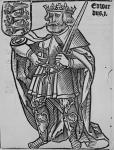
King Edward I of England © Hulton Getty
|
|
|
Balliol Crowned
|
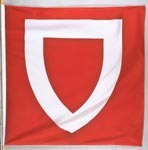
Arms of John Balliol, Lord of Galloway © Dr Patrick Barden
|
In November 1292, John Balliol was declared King of Scotland. However, unlike the relationship with Alexander III, Edward I did not treat him as an equal, more as a subject. For example, Edward ordered him to attend appeals against the crown. Things further deteriorated when Edward ordered the Scottish king and senior nobles (including Robert the Bruce's grandfather) to accompany him to war in France. It was too much to bear for the Scots nobles and they resisted, forming an alliance with France in 1295.
|
Rebellion
Edward reacted to what he saw as treason and gathered his troops to march to Scotland. But he had to deal with an uprising in Wales first. Edward's subjugation of Wales had been interrupted by a rebellion which he quelled with the 30,000 troops he was going to use in France. He showed his contemptuous rule over the country by using the title Prince of Wales for his son, the future Edward II. He was the first Englishman to receive what was regarded as the chief honour in Wales. In March 1296 the Scots marshalled their forces near Selkirk. It was not a force involving all nobes. They were without Robert the Bruce, who had sworn loyalty to Edward in 1292. At Easter, the Scots nobles and their forces attacked Carlisle in the North West of England and then Northumberland in the North East where they burnt churches and monasteries.
|
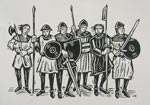
Soldiers of the War of Independence by Owain Kirby © Stirling Smith Art Gallery & Museum
|
Berwick
|
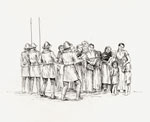
The Berwick Massacre © Dianne Sutherland
|
Edward responded with the brutal sacking of Berwick, leading to possibly as much as 20,000 deaths of the population of what was Scotland's biggest and richest town at the time. They were not killed in fighting - the town was taken relatively easily - but in a 3 day massacre of men, women and children that followed. This important town with trading links to Europe was never to regain its prominent position. Following the carnage, Edward and his forces moved North. At Dunbar, the Scots, who had acted foolishly in taking on the experienced cavalry of John De Warenne, were soundly beaten. One of those captured after the battle was Andrew Murray, who was to play a crucial role in Wallace's later military campaigns.
|
Edward was now free to roam through Scotland as if it was his own fiefdom. This he did, taking control of castles and humiliating King John as he went, resulting in the forced abdication of Balliol in Angus in July 1296. The stripping of the royal emblems earned Balliol the insulting name "Toom Tabard" (Empty Tabard). He was sent to the Tower of London and thereafter spent the rest of his life in relatively comfortable exile. It was one of William Wallace's aims to restore Balliol to the throne of Scotland.
|
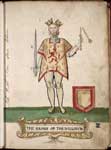
John Balliol, from the Forman Armorial © National Library of Scotland
|
Stone of Scone
|

Stone of Destiny © Crown Copyright reproduced courtesy of Historic Scotland
|
Amongst other precious artefacts, Edward also removed the Stone of Scone (Stone of Destiny). He had it taken to Westminster Abbey in London, where it remained for almost 700 years, until being returned to Scotland in 1996. Then, it was placed with the Honours of Scotland in Edinburgh Castle.
|
Ragman’s Roll
Edward's dominance over Scotland was total. He made over 2,000 freeholders swear allegiance to him, in a document which became known as the Ragman's Roll. The country defeated, he left Englishmen to govern in his place: John De Warenne in overall charge, with Hugh Cressingham as treasurer.
|

Charter recording signing of Ragman Rolls, 1296 © The Multimedia Team
|
|
|







